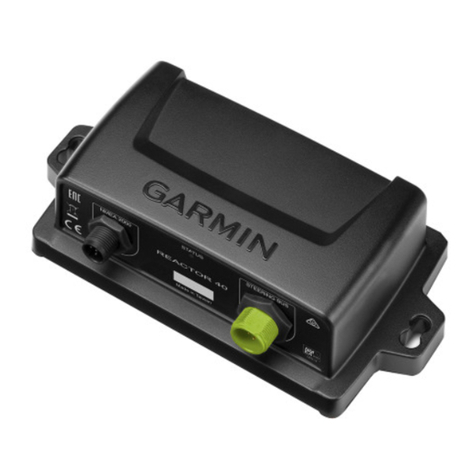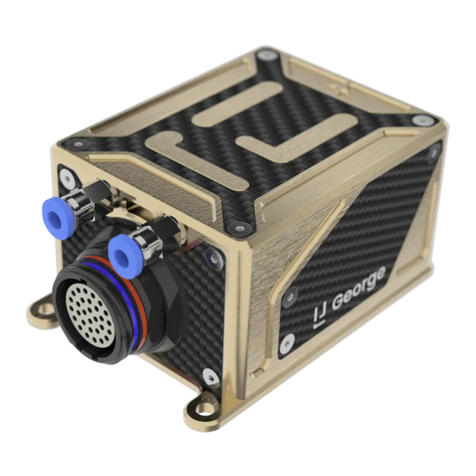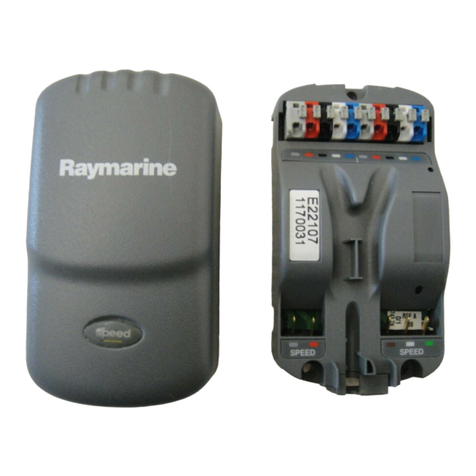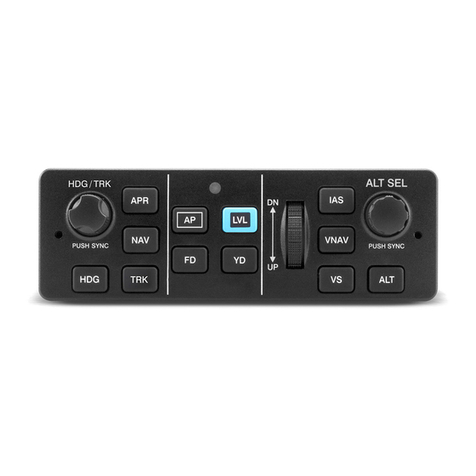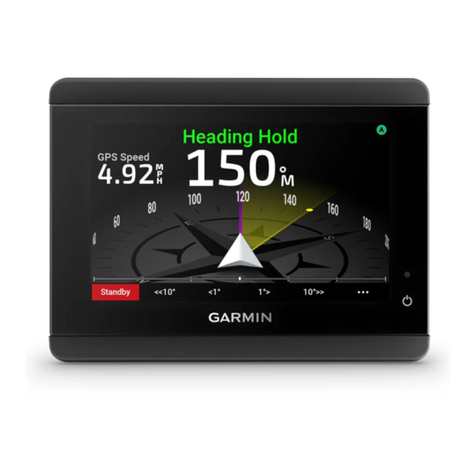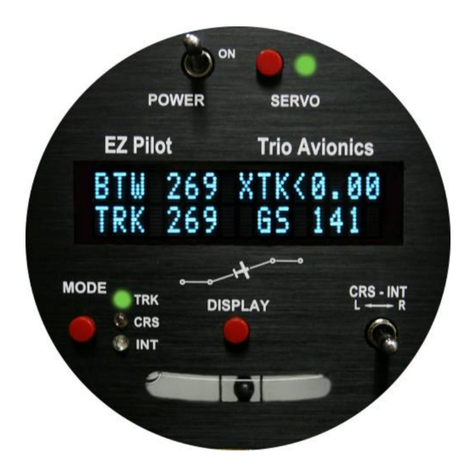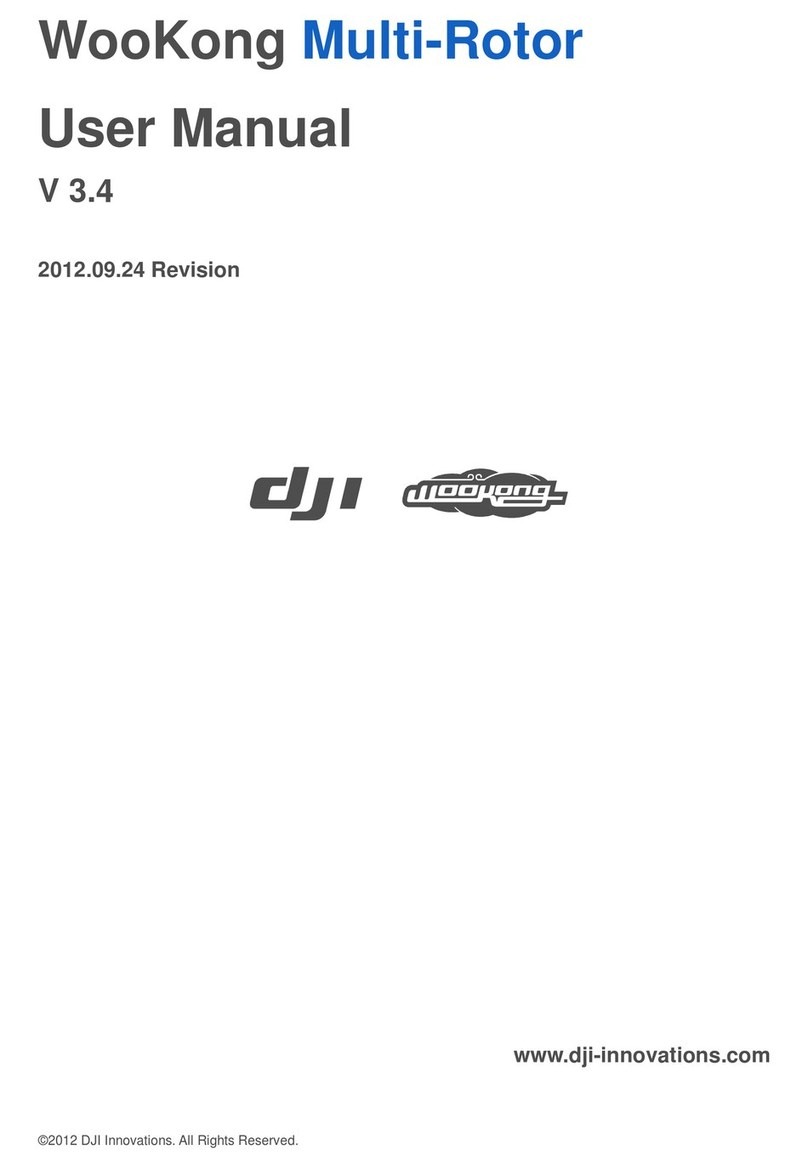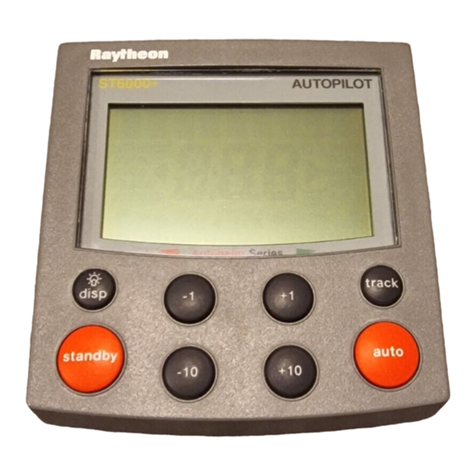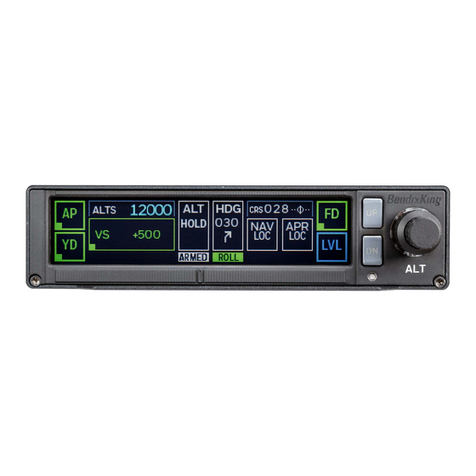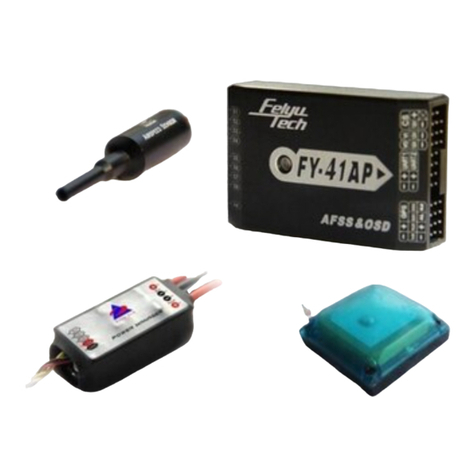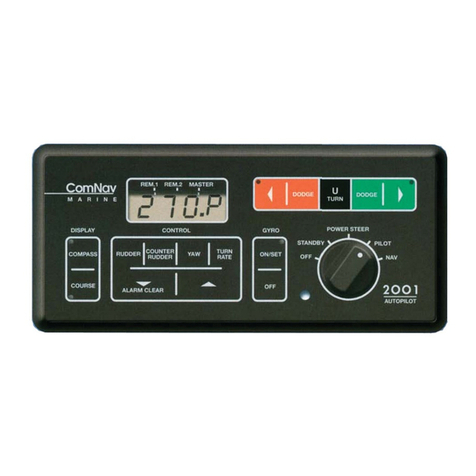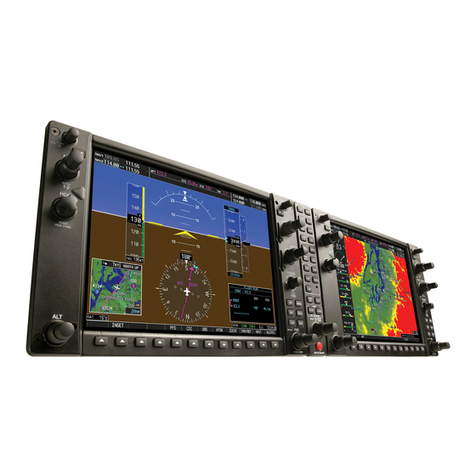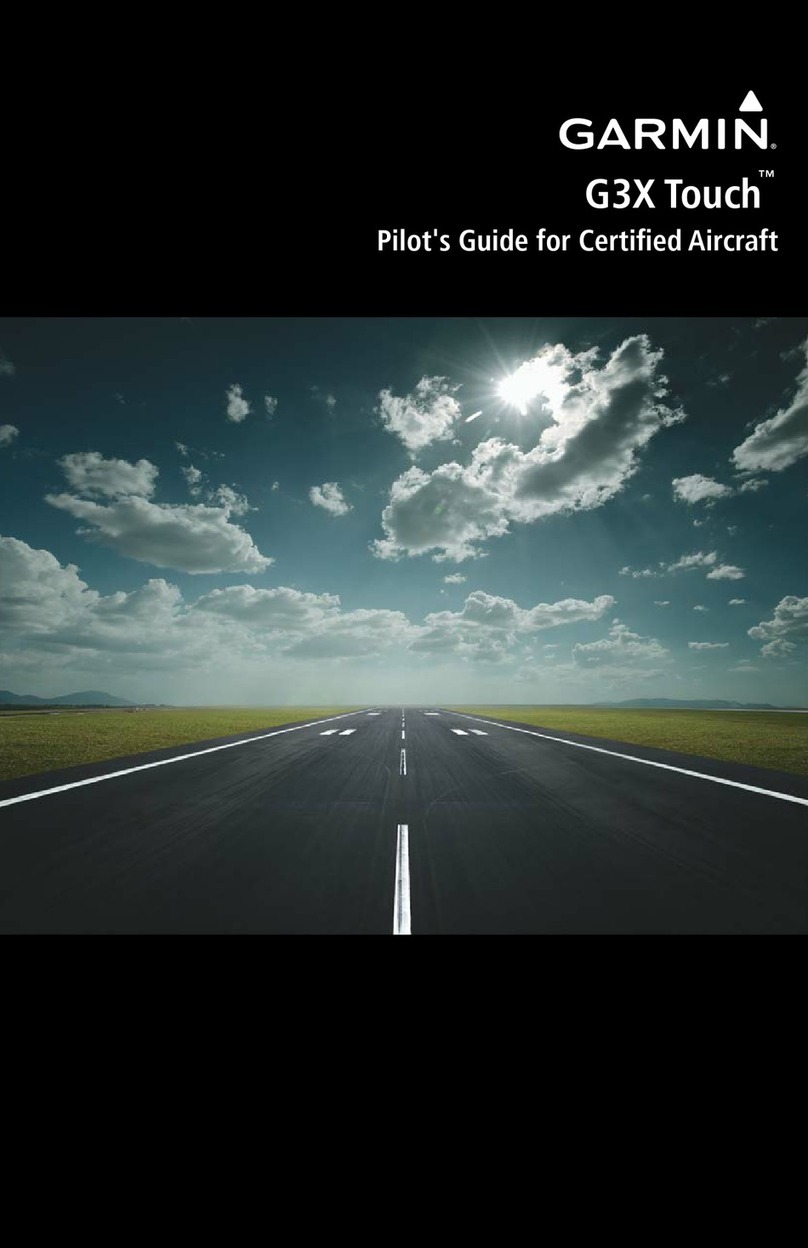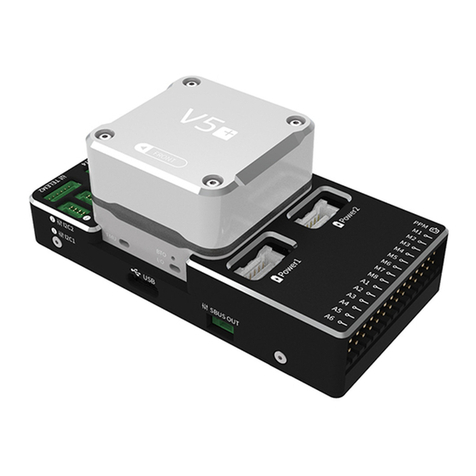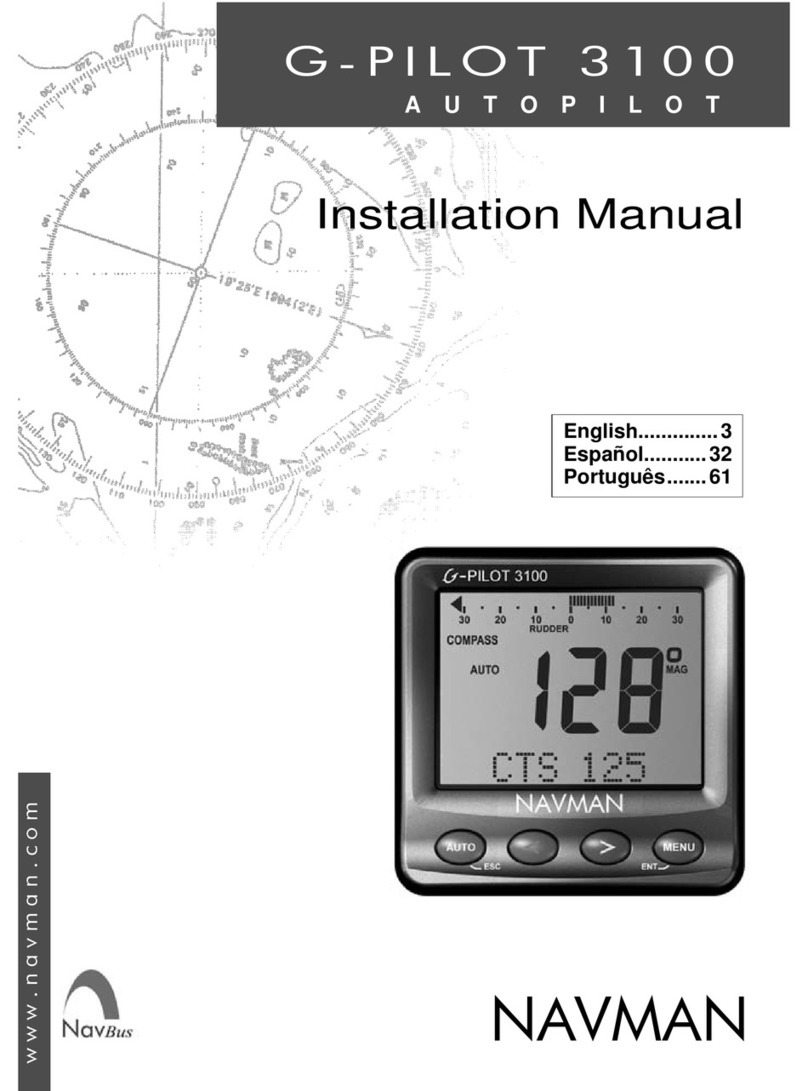Avidyne DFC100 Manual



Page Chg
Cover…...0
Page #......1
TOC-1......1
TOC-2.…..1
1-1……….1
1-2……….0
1-3……….1
1-4……....1
1-5……....1
1-6…….…1
1-7…….…1
1-8…….…1
1-9…….…1
1-10……...1
1-11……..1
1-12……..1
1-13……..2
1-14……..1
1-15……..1
1-16……..1
1-17……..1
1-18……..1
2-1……….0
2-2……….0
Page Chg
2-3……….1
2-4……….0
3-1……….0
3-2……….0
3-3……….1
3-4……….0
3-5……….0
3-6……….0
3-7……….0
3-8……….0
3-9……….1
3-10……..0
3-11……..0
3-12……..0
3-13……..0
3-14……..1
3-15……..1
4-1……….1
4-2……….1
4-3……….0
4-4……….0
4-5……….1
4-6……….0
4-7……….0
Page Chg
4-8…….…0
4-9……….0
4-10……..0
4-11……..1
4-12……..1
5-1……….0
5-2……….1
5-3……….1
5-4……….0
5-5……….1
5-6……….1
5-7……….1
5-8……….0
5-9……….0
5-10……..0
6-1……….1
6-2…….…1
6-3…….…1
6-4……….1
6-5……….1
6-6……….1
Indx-1…...1
IBC……....0
OBC…..…1
Change 1

1-2 System Overview
DFC100 Digital Autopilot | PILOT GUIDE
TABLE OF CONTENTS
1System Overview ..............................................................1-2
FUNCTIONAL OVERVIEW ..........................................................1-3
GENERAL AUTOPILOT OPERATIONS.......................................1-4
Basic Autopilot Operation......................................................................1-4
Capture And Hold Operation.................................................................1-4
Target (Bug) Setting..............................................................................1-4
Aural Alerts...........................................................................................1-5
Armed vs Engaged Mode Indications....................................................1-6
Mode Transition Indication....................................................................1-6
Manual Electric Trim Disconnect...........................................................1-7
Envelope Protection..............................................................................1-8
Full-Time Envelope Alerting..................................................................1-9
Barometer Setting Adjustment ............................................................1-12
Engagement and Hold limits ...............................................................1-13
Comparators.......................................................................................1-14
Autopilot Engagement.........................................................................1-15
Autopilot Disengagement....................................................................1-15
FD vs. AP ...........................................................................................1-16
PFD Annunciations.............................................................................1-17
2Normal Startup Sequence................................................2-2
POWER CONSIDERATIONS.......................................................2-2
SELF-TEST/ALIGNMENT ............................................................2-2
BRIGHTNESS CONTROLS .........................................................2-2
PRE-FLIGHT TEST......................................................................2-3
BEFORE TAKEOFF TECHNIQUES.............................................2-4
3Climb-out/Enroute.............................................................3-2
NORMAL OPERATING MODES..................................................3-2
Pitch Mode............................................................................................3-2
Roll Mode .............................................................................................3-2
Vectors (HDG) Mode ............................................................................3-3
Navigation (NAV) Mode ........................................................................3-4
Altitude Hold (ALT) Mode......................................................................3-5
Indicated Airspeed (IAS) Hold Mode.....................................................3-5
Vertical Speed (VS) Hold Mode ............................................................3-6
VNAV Mode..........................................................................................3-7
Altitude Capture Mode........................................................................3-10
Straight and Level...............................................................................3-12
Pilot Selectable Intercepts...................................................................3-13
Control Wheel Steering Mode.............................................................3-14
Take off/Go Around (TO/GA) Mode.....................................................3-15
4Approach Procedures ......................................................4-2
GENERAL BEHAVIOR.................................................................4-2
APPROACH MODES ...................................................................4-2
WAAS Approaches...............................................................................4-2
Non-WAAS GPS approach (RNAV or Overlay or LNAV).......................4-5
VOR approach......................................................................................4-5
Localizer approach................................................................................4-6
Change 1

ILS approach including glide slope intercept .........................................4-7
Procedure Turn ILS or Localizers..........................................................4-8
Back course approaches.......................................................................4-9
Missed Approach................................................................................4-10
Take off/Go Around (TO/GA) Mode.....................................................4-11
5Abnormal Procedures ......................................................5-2
GENERAL FAILURE MODE INFORMATION...............................5-2
OTHER ERROR MODES.............................................................5-5
ALERTS........................................................................................5-7
LOSS OF ENGINE .....................................................................5-10
6Limitations and Performance ..........................................6-2
LIMITATIONS...............................................................................6-2
SOFTWARE COMPATABILITY AND NOTES..............................6-4
GENERAL PERFORMANCE – CIRRUS AIRCRAFT...................6-5
PERFORMANCE IN PITCH TRIM-ONLY AIRCRAFT..................6-6
PERFORMANCE IN NON-CIRRUS AIRCRAFT...........................6-6
Index............................................................................................1
Change 1


System Overview 1-1
1System Overview ..............................................................1-2
FUNCTIONAL OVERVIEW ..........................................................1-3
GENERAL AUTOPILOT OPERATIONS.......................................1-4
Basic Autopilot Operation......................................................................1-4
Capture And Hold Operation.................................................................1-4
Target (Bug) Setting..............................................................................1-4
Aural Alerts...........................................................................................1-5
Armed vs Engaged Mode Indications....................................................1-6
Mode Transition Indication....................................................................1-6
Manual Electric Trim Disconnect...........................................................1-7
Envelope Protection..............................................................................1-8
Full-Time Envelope Alerting..................................................................1-9
Barometer Setting Adjustment ............................................................1-12
Engagement and Hold limits ...............................................................1-13
Comparators.......................................................................................1-14
Autopilot Engagement.........................................................................1-15
Autopilot Disengagement....................................................................1-15
FD vs. AP ...........................................................................................1-16
PFD Annunciations.............................................................................1-17
Change 1

1-2 System Overview
1 System Overview
This manual assumes that the pilot is appropriately licensed, is
proficient in operation of the aircraft and its equipment, and is in
compliance with all Federal Aviation Regulations (FARs).
All images contained in this manual are for reference use only,
and are subject to change.
Avidyne strongly recommends that pilots use the DFC100 system
only under VFR conditions until completely familiar with its
operation and use.
Boxed areas marked as NOTE within this manual identify certain
situations or areas of operation having safety implications. While
it is important for the operator to be familiar with all of the
information in the manual, it is essential to the safe use of the
DFC100 that pilots give careful attention to the material contained
within these NOTEs.
Boxed areas marked as WARNING within this manual identify
certain situations or areas of operation having unique and
heightened safety implications.
In order to avoid a diversion of attention from the task of safely
taxiing, pilots should avoid performing the described cockpit tasks
while the aircraft is in motion during taxi.
It remains the pilot’s duty to monitor the autopilot for proper
function upon activation and during use.
Internal DFC100 data logs are property of Avidyne.
DFC 100 Digital Flight Control Panel

System Overview 1-3
FUNCTIONAL OVERVIEW
The Avidyne DFC100 autopilot supports the following functions:
•Flight Director
•Heading Capture/Hold
•NAV Tracking
•Vectors Mode
•VNAV Tracking
•Approach Mode (includes LOC, ILS, VOR, BC, LPV,
LNAV/VNAV, LNAV+V)
•Altitude Hold
•Altitude Capture
•Vertical Speed Hold
•Indicated Airspeed Mode
•Straight and Level
•Pilot Selectable Intercept Angles
•Control Wheel Steering (not available in all aircraft)
•Takeoff/Go Around (TO/GA) Mode (not available in all
aircraft)
•Speed-based Envelope Protection
•Full-time Envelope Alerting
NOTE
Envelope Protection vs. Envelope Alerting
There is a distinction between Envelope Protection
and Full-time Envelope Alerting. Envelope
Protection will result in active driving of the flight
control surfaces by the autopilot. Full-time
Envelope Alerting will only provide visual and aural
alerting but it is up to the pilot to manually make any
control surface changes.
Change 1

1-4 System Overview
GENERAL AUTOPILOT OPERATIONS
NOTE
Avoid Pilot Flight Control Input In AP
The pilot should not make any input to the flight
controls while the autopilot is engaged.
BASIC AUTOPILOT OPERATION
The DFC100 autopilot always has both a lateral and vertical
mode active when engaged. If a specific lateral mode has not
been selected by the pilot, then the system defaults to Roll Hold
mode. If a specific vertical mode has not been selected by the
pilot, then the system defaults to Pitch Hold mode.
CAPTURE AND HOLD OPERATION
A single button press will typically engage the mode pressed and
arm a logical choice that will capture if the capture criteria are
met. For example, pressing IAS or VS will hold the indicated or
vertical speed and arm altitude. Another example is pressing the
HDG button will engage heading mode and arm NAV mode (if
Primary Nav LSK is set to FMS).
If you want the autopilot to remain in the selected mode (e.g. stay
in IAS mode and not capture altitude even if the aircraft flies
through the altitude bug setting), press the desired button (IAS in
this example) a second time to disarm the capture. The blue
armed indicator (ALT in this example) on the autopilot and the
PFD page will extinguish.
TARGET (BUG) SETTING
The primary location for setting both the IAS and VS targets are
via the dedicated knobs on the autopilot control head.
The primary location for setting the HDG and ALT targets are via
the dedicated knobs on the keyboard.
Change 1

System Overview 1-5
AURAL ALERTS
Aural alerting, through the aircraft intercom system, is provided
for warnings from the autopilot. In the context of the bullets
below, “coupled” describes the condition when the autopilot
servos are flying the airplane and “non-coupled” describes the
condition when the servos are not flying the airplane and instead,
the pilot is expected to follow the flight director command bars.
Specifically, aural alerts as defined in the parenthesis are
provided under the following conditions:
Autopilot Disengagement (Approximately 16 disconnect
beeps)
Underspeed during coupled operations (“Speed
Protection Active”)
Overspeed during coupled operations (“Speed Protection
Active”)
Underspeed during non-coupled operations (“Caution,
Underspeed”)
Overspeed during non-coupled operations (“Caution,
Overspeed”)
Dual AHRS equipped systems: Attitude and Heading
Reference System (AHRS) Miscompare (“Gyro
Miscompare”)
Single AHRS equipped systems: Attitude and Heading
Reference System (AHRS) and Turn Coordinator
Miscompare (“Gyro Miscompare”)
Single AHRS equipped systems: Crosscheck Attitude 1
(“Gyro Miscompare”)
POH bank limit exceeded (“Caution, Excessive Bank”)
POH flap extension speed exceeded (“Caution, Flap
Overspeed”)
Change 1

1-6 System Overview
ARMED VS ENGAGED MODE INDICATIONS
The DFC100 autopilot has more readily distinguishable armed vs.
engaged modes in order to provide the user higher awareness of
the current autopilot state and upcoming state transitions.
An armed mode is defined as a state that will be captured when
and if the airplane crosses that target. Armed modes are
indicated by a cyan (blue) color on both the autopilot control
panel and on the PFD mode annunciator strip.
An engaged mode is defined as a state that the autopilot is
holding. Engaged modes are indicated by a green color on both
the autopilot control panel and on the PFD mode annunciator
strip. One exception is that when AP is on, both “FD” and “AP”
are not lit on the PFD mode annunciator strip – FD is always on
with AP.
The images below demonstrate the armed and engaged coloring
on both the display and the autopilot control head. In this
example, Heading (HDG) and Pitch modes are engaged and Nav
mode and Alt are armed.
MODE TRANSITION INDICATION
Automatic transition from armed (cyan) to engaged (green) states
is indicated by the cyan armed button on the autopilot control
Change 1

System Overview 1-7
panel and mode annunciation on the PFD changing to green and
flashing for up to 10 seconds.
Note that the engaged (green) autopilot mode annunciators will
also flash when in underspeed or overspeed conditions. This
flashing is intended to gain the pilot’s attention and to indicate
that while the modes are still engaged (green), the underspeed or
overspeed condition may be affecting the system’s ability to hold
the target value. As soon as the underspeed or overspeed
condition is no longer true, the annunciators stop flashing and the
system reacquires the target values as required.
MANUAL ELECTRIC TRIM DISCONNECT
Use of the manual electric trim (MET) in the pitch axis via the
cockpit controls will result in the autopilot disconnecting and then
the trim running as commanded by the MET control.
NOTE
Trim Behavior in Cirrus Aircraft
For Cirrus aircraft equipped with a pitch servo,
actuating the trim switch will disconnect the AP. For
Cirrus aircraft that are equipped with pitch trim only,
actuating the trim switch will have no effect during
autopilot operations (trim will not adjust and the AP
will not disengage). For predictability of results,
pilots of Cirrus aircraft should therefore determine
whether the aircraft is equipped with a pitch servo or
pitch trim before actuating the trim switch in IMC
conditions.
Change 1

1-8 System Overview
ENVELOPE PROTECTION
The DFC100 system provides speed-based Envelope Protection
(underspeed and overspeed warnings and protection) when in
any coupled autopilot mode.
NOTE
No Envelope Protection in Flight Director Mode
Envelope Protection is not provided during flight
director-only (non-coupled) operations.
NOTE
Aircraft Stall Possible with Envelope Protection
Conditions can exist where an aircraft can be placed
in an attitude and/or configuration that would exceed
the capability of the Envelope Protection system to
prevent a stall.
When the servos are engaged (AP mode), the likelihood that a
command can be made which results in an autopilot induced stall
is significantly reduced over conventional autopilots. If for
example, a positive rate of climb was commanded and a low
power setting is being held, the autopilot will attempt to achieve
the commanded state but as the energy of the airplane decays to
approximately 1.2 Vs, the autopilot will adjust bank angle and then
pitch angle as required to maintain no lower than 1.2 Vs. Bank
angle may be reduced before pitch is adjusted in an effort to
avoid even entering envelope protection. As soon as bank angle
is adjusted by the autopilot, the pilot is alerted through visual
means on the PFD (“UNDERSPEED” text alert and any engaged
(green) autopilot mode annunciator will flash) and as soon as
pitch is adjusted, the pilot is alerted through the same visual
means on the PFD, and aural alerting in the headsets (“SPEED
PROTECTION ACTIVE”). In all cases, when underspeed
protection is active, maximum bank angle will be reduced,
typically to 5 degrees.
Change 1

System Overview 1-9
Similarly, envelope protection will provide high-speed protection
and alerting near Vne. In this case, as Vne is approached in AP
mode, the autopilot will adjust pitch as required to maintain an
airspeed near Vne. Aircraft bank angle is not adjusted by the
autopilot during overspeed protection. Depending on conditions
(e.g. rapidly changing airspeed, turbulence, etc.), it is possible for
Vne to be exceeded. An overspeed condition is annunciated to the
pilot via an “OVERSPEED” text alert on the PFD, a “SPEED
PROTECTION ACTIVE” aural alert in the headsets, and by a
flashing of any engaged (green) autopilot mode annunciators.
The DFC100 takes flap position into account in Envelope
Protection and Envelope Alerting calculations and as a result, the
definition of Vs, changes depending on flap position.
NOTE
Envelope Protection During Icing Conditions
The DFC100 autopilot is not to be used during icing
conditions in any non-FIKI approved aircraft, or
during severe icing conditions in any FIKI approved
aircraft. The autopilot does not have any kind of
AOA or icing input and therefore does not register
changing aircraft dynamics during icing conditions.
Therefore, Envelope Protection is not effective
under icing conditions.
FULL-TIME ENVELOPE ALERTING
The DFC100 autopilot provides speed-based and attitude-based
envelope alerting whenever the autopilot is not engaged (servos
not coupled).
Full-time Envelope Alerting is provided during flight director
operations (servos not coupled). Full-time Envelope Alerting is
also provided even when the autopilot and flight director are off
and the autopilot is in the standby position as noted by the AP
READY mode annunciator on the top strip of the PFD pages.
Change 1

1-10 System Overview
Full-time Envelope Alerting is triggered when the DFC100
recognizes an underspeed, overspeed or excessive bank angle
condition and will alert the pilot via text alerts on the PFD pages
and aural alerts.
NOTE
Suppression of Full-time Envelope Alerting
Full-time Envelope Alerting is suppressed during
very low power (near idle) conditions when flaps are
set to the full-flap position in order to minimize
nuisance calls in the landing phase. Full-time
Envelope Alerting is also suppressed anytime
Indicated Airspeed is less than 50 KIAS in order to
minimize nuisance calls during rollout and taxi.
In Flight Director operations, the flight director command bars will
continue to direct a pilot to fly to the commanded pitch and roll
targets as defined by the bug and nav source entries but if an
underspeed condition is recognized, a “UNDERSPEED” text alert
is displayed along the top edge of the PFD pages and a
“CAUTION, UNDERSPEED” aural alert is played in the headsets
and is repeated approximately every 6 seconds until the condition
is no longer valid. The autopilot mode annunciators do not flash
during Envelope Alerting. The trigger for this Envelope Alerting
underspeed alert is when the system has determined 1.2Vshas
been reached. Flap position, bank angle and g-loading are taken
into account to define Vsat any point in time (assumes max gross
weight).
Similarly, during high-speed flight director operations, the flight
director command bars will continue to direct a pilot to fly to the
commanded pitch and roll targets as defined by the bug and nav
source entries but if an overspeed condition is recognized, a
“OVERSPEED” text alert is displayed along the top edge of the
PFD pages and a “CAUTION, OVERSPEED” aural alert is played
in the headsets and is repeated approximately every 6 seconds
until the condition is no longer valid. There is no flashing of any
autopilot mode annunciator during Envelope Alerting. The trigger
for this Envelope Alerting overspeed alert is when the system has
determined Vne is about to reached.
Change 1

System Overview 1-11
If the autopilot is not engaged in any Autopilot or Flight Director
modes and is in the standby condition, as indicated by the green
“AP READY” annunciator on the PFD and no green or cyan lights
on the autopilot control head, Full-time Envelope Alerting is still
active. In this case, there are no flight director command bars
present and no autopilot mode annunciators aside from the “AP
READY” one along the top edge of the PFD.
If an underspeed condition is recognized, an “UNDERSPEED”
text alert is displayed along the top edge of the PFD pages and a
“CAUTION, UNDERSPEED” aural alert is played in the headsets
and is repeated approximately every 6 seconds until the condition
is no longer valid. The trigger for this Envelope Alerting
underspeed alert is when the system has determined 1.2Vshas
been reached. Flap position, bank angle and g-loading are taken
into account to define Vsat any point in time. One common
scenario this capability is designed to alert against is a traffic
pattern stall.
Similarly, on the high-speed end of the spectrum with the
autopilot in the standby condition (green “AP READY” along the
top strip of the PFD pages), if an overspeed condition is
recognized, a “OVERSPEED” text alert is displayed along the top
edge of the PFD pages and a “CAUTION, OVERSPEED” aural
alert is played in the headsets and is repeated approximately
every 6 seconds until the condition is no longer valid. The trigger
for this Envelope Alerting overspeed alert is when the system has
determined Vne is about to reached.
NOTE
Triggering of Overspeed Alerts
Full-time Envelope Alerting provides overspeed
alerting as Vne is approached. The software uses a
combination of speed rate, pitch rate, bank and
indirectly, g-onset rate to determine when to issue
the alarm. If it detects the aircraft is actually
recovering as speed approaches Vne, the
overspeed alert may be delayed until right at, or
slightly over, Vne.
Change 1

1-12 System Overview
Finally, if at any time and in any flight director or standby state,
the system detects an excessive bank condition, a “BANK LIMIT”
text alert is displayed along the top edge of the PFD pages and a
“CAUTION, EXCESSIVE BANK” aural alert is played in the
headsets and is repeated approximately every 6 seconds until the
condition is no longer valid.The trigger for this Envelope Alerting
excessive bank limit is when the system has determined that the
lesser of aircraft category or aircraft POH bank angle limits has
been exceeded. This number is typically 60 degrees of bank.
If “AP READY” or “FD” are not displayed on the PFD page, Full-
time Envelope Alerting may not be available.
To disable Full-time Envelope Alerting, pull the autopilot circuit
breaker.
BAROMETER SETTING ADJUSTMENT
Upon input of a new barometric altimeter setting, the autopilot
automatically re-captures the previously set target altitude,
without further action required from the pilot. For example, if the
autopilot was in Altitude Hold, changing the barometric pressure
setting will result in the autopilot automatically correcting the
appropriate amount to re-capture the previous MSL altitude hold
target.
Change 1

System Overview 1-13
ENGAGEMENT AND HOLD LIMITS
The DFC100 has maximum engagement limits beyond which the
autopilot may not allow a mode to be selected, and maximum
hold limits for various parameters. The engagement limits of the
autopilot are wider than the hold limits. If the autopilot is engaged
between the maximum engagement limits and the maximum hold
limits, the autopilot will reduce the value to be within the
published maximum hold limits.
The maximum engagement and hold limits are as follows:
Autopilot Mode Maximum
Demonstrated
Engagement Limits
Maximum
Hold Limits
Roll Hold ±60°bank ±22°bank
Heading ±60°bank ±22°bank (but
typically holds 1
stnrd rate of turn)
Pitch Hold ±30°pitch -10°to +15°pitch
IAS Hold 20 KIAS to Vne 1.2Vsto 185 KIAS
VS Hold ±1600 fpm ±1600 fpm
Straight and
Level ±60°bank, ±30°pitch Will stabilize in +2°
pitch and zero
bank angle
Localizer, VOR,
GPS approach
Capture
Not Applicable ±22°bank
Localizer, VOR,
GPS approach
Track
Not Applicable ±10°bank
Change 2

1-14 System Overview
COMPARATORS
There are various comparators running in the IFD and DFC100
system as noted in the chart below. If conflicting information is
provided, the comparator identifying the conflict with the
accompanying pilot indication and autopilot behavior is noted in
the table below:
Type of
Comparator Indication to Pilot Autopilot behavior
Internal kinematic
comparator within
the AHRS
(compares AHRS
state data with
itself, eg. turn rate
without
accompanying
heading change,
etc)
“CROSSCHECK
ATTITUDE 1”
annunciation on
PFD page for minor
issues and indicator
removal and
replacement by
“Red-X” for major
issues
Dual AHRS
Systems: No
autopilot disconnect
Single AHRS
Systems: Autopilot
will disconnect with
a “Crosscheck
Attitude 1” but will
allow manual re-
engagement by the
pilot.
Dual AHRS
Systems: AHRS-to-
AHRS Comparator
Single AHRS
Systems: AHRS-to-
Turn Coordinator
(TC) Comparator
Miscompare Alert
message(s)
presented to the
pilot on the IFD
(“AHRS
Miscompare” CAS
message) and in
the headset
(“GYRO
MISCOMPARE”)
Autopilot will
disconnect with a
Pitch or Roll
miscompare (dual
AHRS systems) but
not for an AHRS-TC
miscompare (single
AHRS systems)
and allow manual
re-engagement by
the pilot after
selection by the
pilot of the operable
AHRS by reference
to the standbys.
Change 1
Table of contents
Other Avidyne Autopilot System manuals

